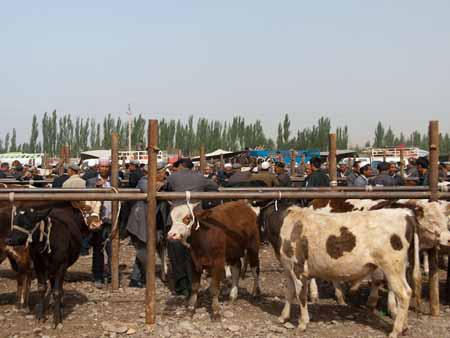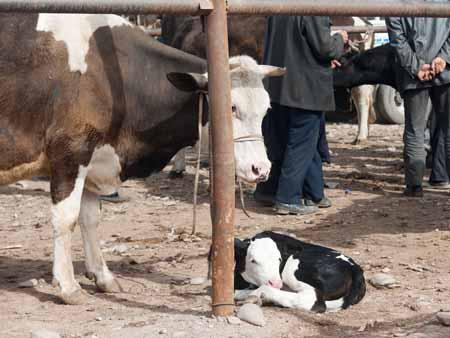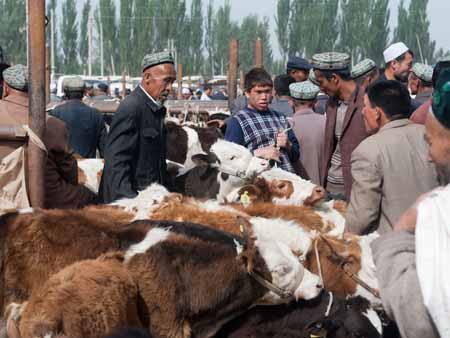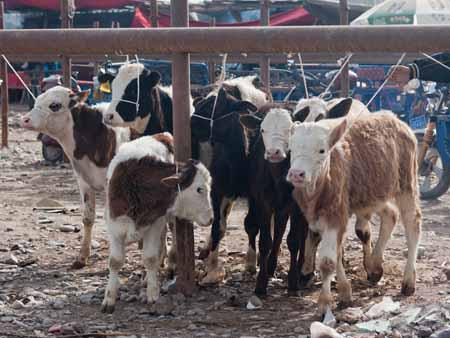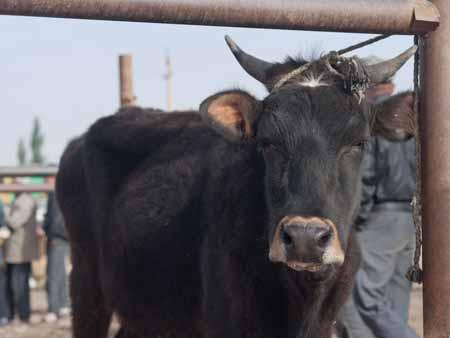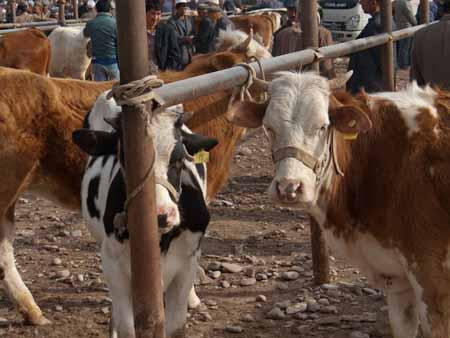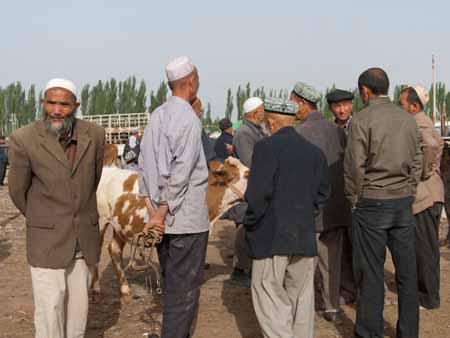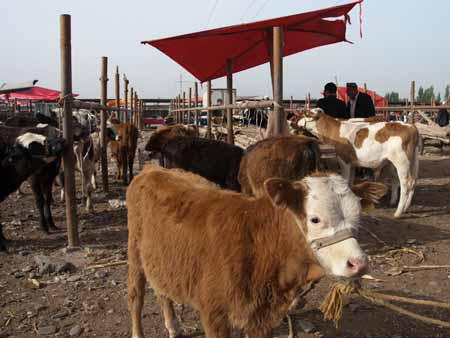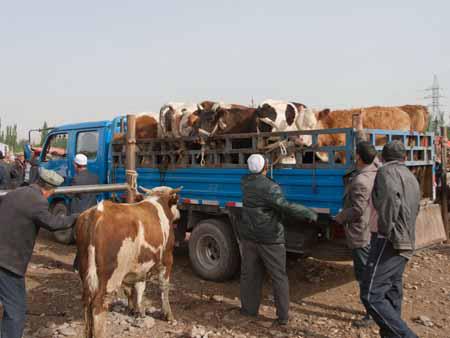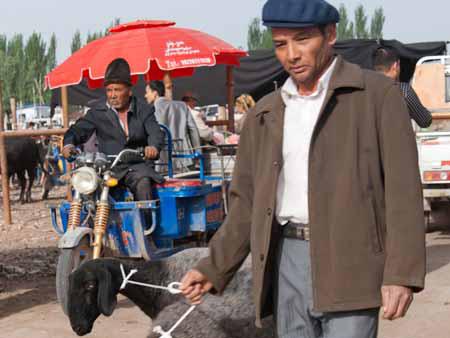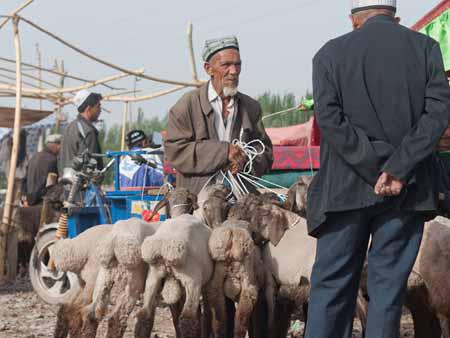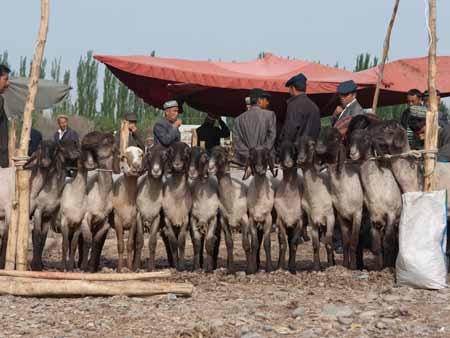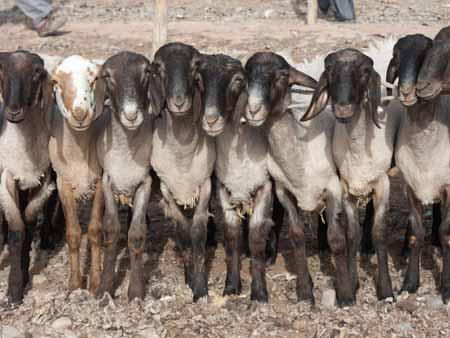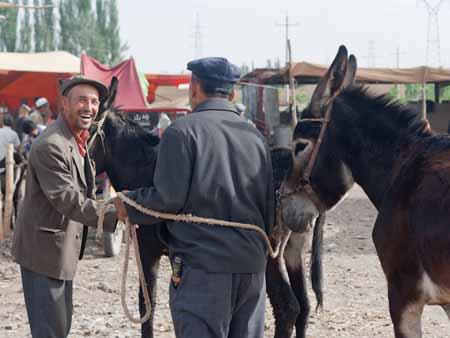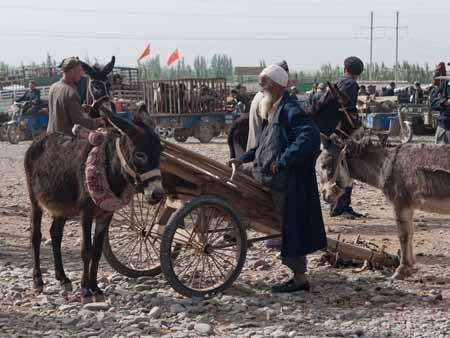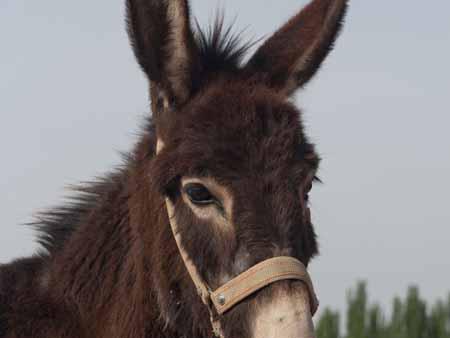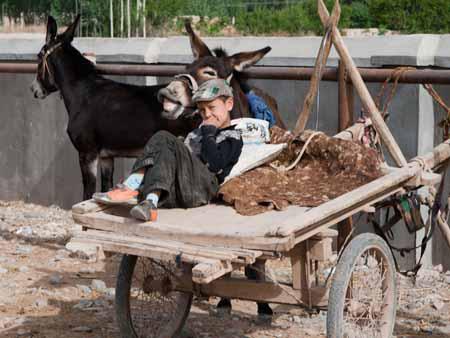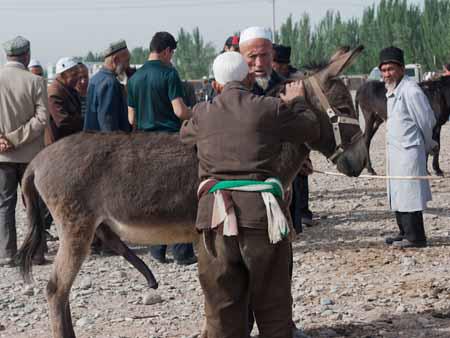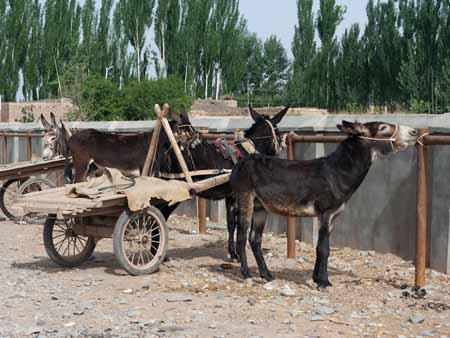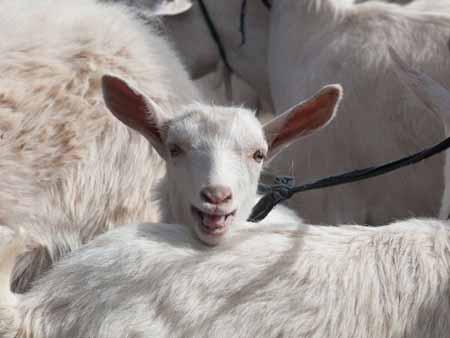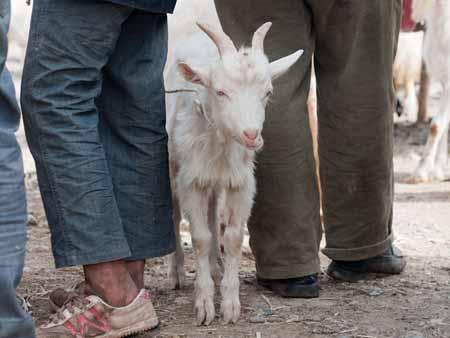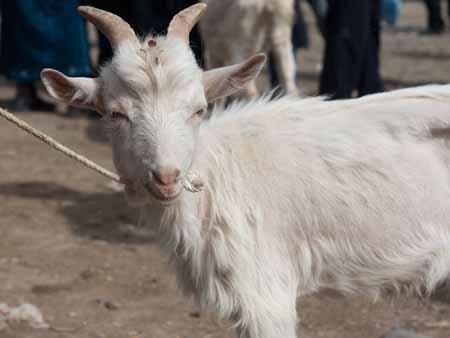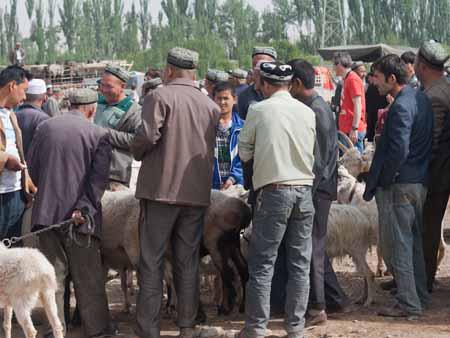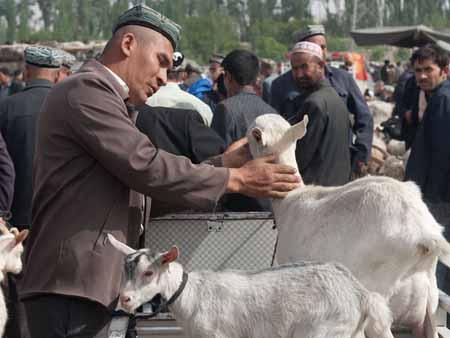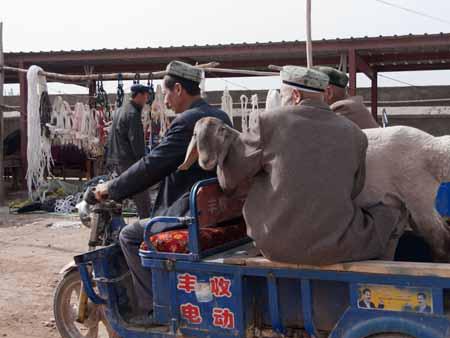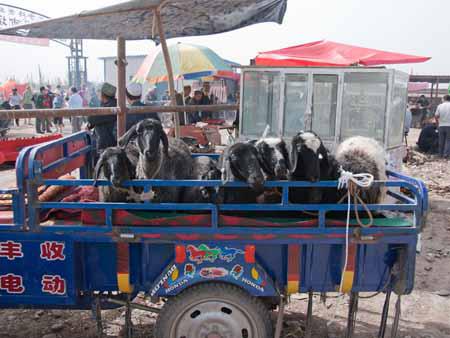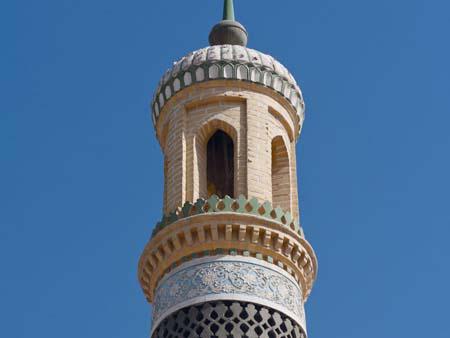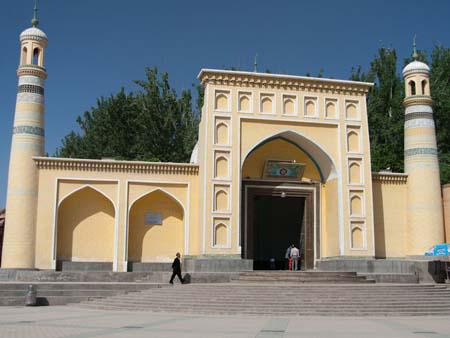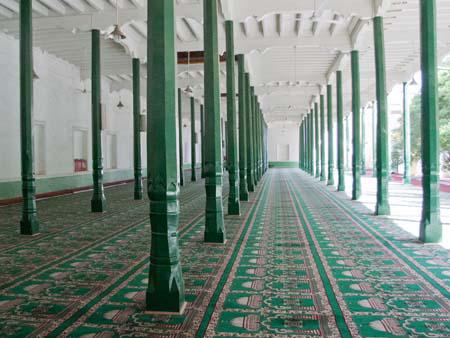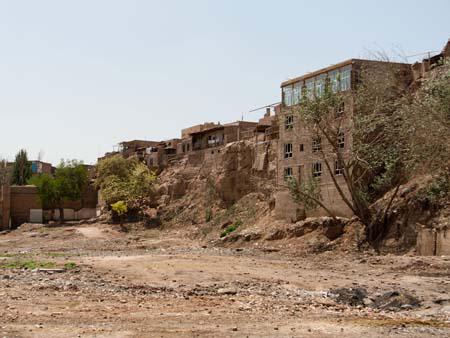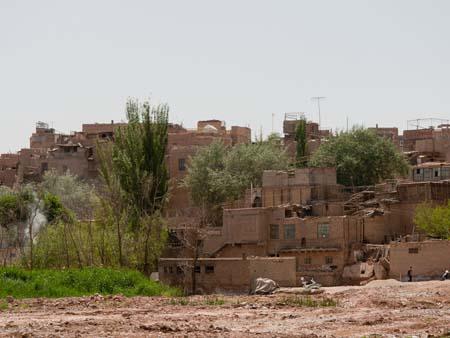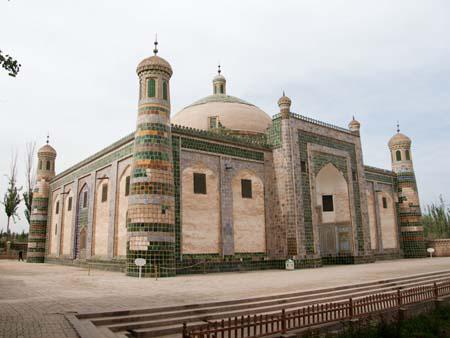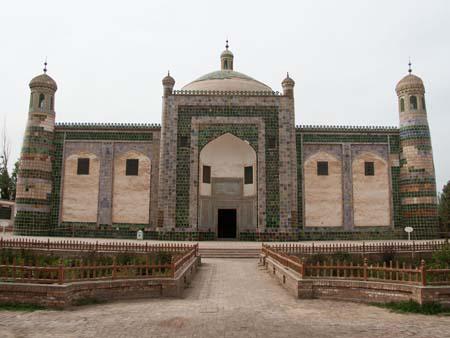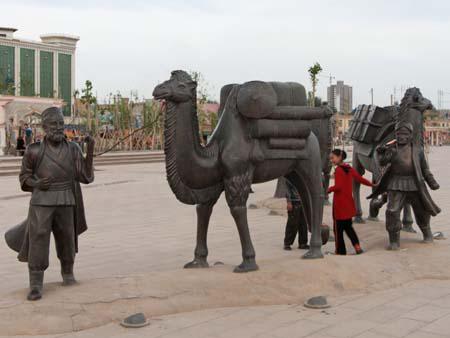It was Travis who was very keen on visiting Kashgar. When faced with our dilemma leaving Kyrgyzstan, I suggested travelling straight to Urumqi and perhaps giving the inconveniently located Kashgar a miss (I’d heard the city was no longer quite the Silk Road trading hub it used to be due to massive Chinese development). That would have been a mistake, and I’m glad my stubborn significant other insisted, one of the reasons being the livestock market (the others being the most enjoyable Uighur street food and fascinating night market).
Any traveller wishing to visit Kashgar should make sure their trip runs over a Sunday, as it is early morning on this day each week the local Kashgari men bundle their most valued livestock and display it for sale. The massive market, located about ten minutes from town comprises of sections for cows, sheep, goats (including a particularly favourite billy goat area), donkeys and horses. There were animals everywhere. I tried to avoid thinking about their fate. It was smelly, dirty and overwhelming, yet wonderfully intriguing to watch the interactions – a local Uighur man inspecting a potential purchase by squeezing the udders of a goat and finally, when the sale was made – the respectful handshakes between buyer and seller.




































































































